Application of An Electrical Resistance Sensor-Based Automated Corrosion Monitor in the Study of Atmospheric Corrosion
Abstract
1. Introduction
2. Experimental Principle and Details
2.1. Experimental Overview
2.2. Electrical Resistance Sensor
2.3. IoT ACM
2.4. Field Test Details
3. Results and Discussions
3.1. Study on the Change Regulation of Atmospheric Corrosion Data
3.2. Study on the Influence of Atmospheric Environmental Elements on Corrosion
4. Conclusion
- Corrosion data acquired by IoT ACM is effective and normal, which can be used for researching atmospheric corrosion of metallic materials after proper processing methods.
- The results about the study of atmospheric corrosion of metallic materials using IoT ACM are consistent with the phenomenon of previous laboratory experiment and conclusions of previously published reports. Using corrosion data can quantify the extent to which atmospheric environmental elements affect the atmospheric corrosion of metallic materials in the initial stage under an actual atmospheric environment.
- IoT ACM can realize real-time and on-line remote monitoring of corrosion data in any atmospheric environment and can replace the metallic material of the electrical resistance sensor to measure atmospheric corrosion data of different metals. Using IoT ACM can provide a new approach for corrosion monitoring, accelerate the progress of scientific research and anticorrosive work and save experiment and engineering cost.
Author Contributions
Funding
Acknowledgments
Conflicts of Interest
References
- Li, X. Informatics for Materials Corrosion and Protection: The Fundamentals and Applications of Materials Genome Initative in Corrosion and Protection; Chinese Chemical Industry Press: Beijing, China, 2014; pp. 46–53. [Google Scholar]
- Morcillo, M.; Chico, B.; Díaz, I.; Cano, H.; de la Fuente, D. Atmospheric corrosion data of weathering steels. A review. Corros. Sci. 2013, 77, 6–24. [Google Scholar] [CrossRef]
- Chico, B.; de la Fuente, D.; Díaz, I.; Simances, J.; Morcillo, M. Annual atmospheric corrosion of carbon steel worldwide. An integration of ISOCORRAG, ICP/UNECE and MICAT databases. Materials 2017, 10, 601. [Google Scholar] [CrossRef] [PubMed]
- Rao, J.; Ratassepp, M.; Lisevych, D.; Caffoor, M.H.; Fan, Z. On-Line corrosion monitoring of plate structures based on guided wave tomography using piezoelectric sensors. Sensors 2017, 17, 2882. [Google Scholar] [CrossRef] [PubMed]
- Melchers, R. Long-term corrosion of cast irons and steel in marine and atmospheric environments. Corros. Sci. 2013, 68, 186–194. [Google Scholar] [CrossRef]
- Fu, X.; Dong, J.; Han, E.; Ke, W. A new experimental method for in situ corrosion monitoring under alternate wet-dry conditions. Sensors 2009, 9, 10400–10410. [Google Scholar] [CrossRef]
- Abdel-Rehim, S.; Khaled, K.; Abd-Elshafia, N. Electrochemical frequency modulation as a new technique for monitoring corrosion inhibition of iron in acid media by new thiourea derivative. Corros. Sci. 2006, 51, 3269–3277. [Google Scholar] [CrossRef]
- Liang, P.; Li, X.; Du, C.; Chen, X. Stress corrosion cracking of X80 pipeline steel in simulated alkaline soil solution. Mater. Des. 2009, 30, 1712–1717. [Google Scholar] [CrossRef]
- Zhang, H.; He, Y.; Gao, B.; Tian, G.; Xu, L.; Wu, R. Evaluation of atmospheric corrosion on coated steel using K-band sweep frequency microwave imaging. IEEE Sens. J. 2016, 16, 3025–3033. [Google Scholar] [CrossRef]
- Li, W.; Xu, C.; Ho, S.; Wang, B.; Song, G. Monitoring concrete deterioration due to reinforcement corrosion by integrating acoustic emission and FBG strain measurements. Sensors 2017, 17, 657. [Google Scholar] [CrossRef]
- Huang, Y.; Gao, Z.; Chen, G.; Xiao, H. Long period fiber grating sensors coated with nano iron/silica particles for corrosion monitoring. Smart Mater. Struct. 2013, 22, 075018. [Google Scholar] [CrossRef]
- Fan, L.; Bao, Y.; Chen, G. Feasibility of distributed fiber optic sensor for corrosion monitoring of steel bars embedded in concrete. Sensors 2018, 18, 3722. [Google Scholar] [CrossRef]
- Li, S.; Kim, Y.; Jung, S.; Song, H.; Lee, S. Application of steel thin film electrical resistance sensor for in situ corrosion monitoring. Sens. Actuators B Chem. 2007, 120, 368–377. [Google Scholar] [CrossRef]
- Legat, A. Monitoring of steel corrosion in concrete by electrode arrays and electrical resistance probes. Eletrochim. Acta 2007, 52, 7590–7598. [Google Scholar] [CrossRef]
- Marja-Aho, M.; Rajala, P.; Huttunen-Saarivirta, E.; Legat, A.; Kranjc, A.; Kosee, T.; Carpéna, L. Copper corrosion monitoring by electrical resistance probes in anoxic groundwater environment in the presence and absence of sulfate reducing bacteria. Sens. Actuators A Phys. 2018, 274, 252–261. [Google Scholar] [CrossRef]
- Prosek, T.; Kouril, M.; Hilbert, L.; Degres, Y.; Blazek, V.; Thierry, D.; Hansen, M. Real time corrosion monitoring in atmosphere using automated battery driven corrosion loggers. Corros. Eng. Sci. Technol. 2008, 43, 129–133. [Google Scholar] [CrossRef]
- Prosek, T.; Kouril, M.; Dubus, M.; Taube, M.; Hubert, V.; Scheffel, B.; Degres, Y.; Jouannic, M.; Thierry, D. Real-time monitoring of indoor air corrosivity in cultural heritage institutions with metallic electrical resistance sensors. Stud. Conserv. 2013, 58, 117–128. [Google Scholar] [CrossRef]
- Prosek, T.; Taube, M.; Dubois, F.; Thierry, D. Application of automated electrical resistance sensors for measurement of corrosion rate of copper, bronze and iron in model indoor atmospheres containing short-chain volatile carboxylic acids. Corros. Sci. 2014, 87, 376–382. [Google Scholar] [CrossRef]
- Chen, F. Design and Application of Electrical Resistance Probe for Natural Environment Corrosion Monitoring. Master’s Thesis, Harbin Institute of Technology, Harbin, China, 2017. [Google Scholar]
- Standard Test Method for Monitoring Atmospheric Corrosion Tests by Electrical Resistance Probes; B826-09 (2015); ASTM International: West Conshohocken, PA, USA, 2015.
- Li, X.; Zhang, D.; Liu, Z.; Li, Z.; Du, C.; Dong, C. Share corrosion data. Nature 2015, 527, 441–442. [Google Scholar] [CrossRef] [PubMed]
- Haight, R.; Haensch, W.; Friedman, D. Solar-powering the Internet of Things. Science 2016, 353, 124. [Google Scholar] [CrossRef] [PubMed]
- Li, L.; Yan, D.; Xu, S.; Huang, M.; Wang, X.; Xie, S. Characteristics and source distribution of air pollution in winter in Qingdao, eastern China. Environ. Pollut. 2017, 224, 44–53. [Google Scholar] [CrossRef] [PubMed]
- Dai, N.; Zhang, J.; Chen, Q.; Yi, B.; Cao, F.; Zhang, J. Effect of the direct current electric field on the initial corrosion of steel in simulated industrial atmospheric environment. Corros. Sci. 2015, 99, 295–303. [Google Scholar] [CrossRef]
- Shi, Y.; Fu, D.; Zhou, X.; Yang, T.; Zhi, Y.; Pei, Z.; Zhang, D.; Shao, L. Data mining to online galvanic current of zinc/copper internet atmospheric corrosion monitor. Corros. Sci. 2018, 133, 443–450. [Google Scholar] [CrossRef]
- Mizuno, D.; Suzuki, S.; Fujita, S.; Hara, N. Corrosion monitoring and materials selection for automotive environments by using atmospheric corrosion monitor (ACM) sensor. Corros. Sci. 2014, 83, 217–225. [Google Scholar] [CrossRef]
- National Urban Air Quality Real-time Release Platform. Available online: http://106.37.208.233:20035/ (accessed on 20 April 2018).
- Zhang, H.; Fu, D. Self-adaptive denoising of carbon steel corrosion monitoring signal based on EMD and wavelet. Equip. Environ. Eng. 2018, 15, 44–49. [Google Scholar]
- Zheng, L. Data errors analysis of real-time electrical resistance probe and treatment. Corros. Prot. Pet. Ind. 2017, 27, 31–34. [Google Scholar]
- Dragomiretskiy, K.; Zosso, D. Variational mode decomposition. IEEE Trans. Signal Process. 2014, 62, 531–544. [Google Scholar] [CrossRef]
- Tracey, B.; Miller, E. Nonlocal means denoising of ECG signals. IEEE Trans. Bio-Med. Eng. 2012, 59, 2383–2386. [Google Scholar] [CrossRef] [PubMed]
- Liu, Y.; Wang, J.; Li, Y.; Zhao, H.; Chen, S. Feature extraction method based on VMD and MFDFA for fault diagnosis of reciprocating compressor valve. J. Vibroeng. 2017, 19, 6007–6020. [Google Scholar]
- Dikbaş, F. A novel two-dimensional correlation coefficient for assessing associations in time series data. Int. J. Climatol. 2017, 37, 4065–4076. [Google Scholar] [CrossRef]
- Hœrlé, S.; Mazaudier, F.; Dillmann, P.; Santarini, G. Advances in understanding atmospheric corrosion of iron. II. Mechanistic modelling of wet–dry cycles. Corros. Sci. 2004, 46, 1431–1465. [Google Scholar] [CrossRef]
- Dai, N. Study on the Corrosion Behavior of Carbon Steel Exposed under the Electric Field in the Atmospheric Environment. Master’s Thesis, Shanghai University of Electric Power, Shanghai, China, 2016. [Google Scholar]
- Schindelholz, E.; Kelly, R.; Cole, I.; Ganter, W.; Muster, T. Comparability and accuracy of time of wetness sensing methods relevant for atmospheric corrosion. Corros. Sci. 2013, 67, 233–241. [Google Scholar] [CrossRef]
- Cai, Y.; Zhao, Y.; Ma, X.; Zhou, K.; Chen, Y. Influence of environment factors on atmospheric corrosion in dynamic environment. Corros. Sci. 2018, 137, 163–175. [Google Scholar] [CrossRef]
- Leygraf, C.; Graedel, T. Atmospheric Corrosion; John Wiley & Sons, Inc.: Hoboken, NJ, USA, 2000. [Google Scholar]
- Cheng, X.; Zhang, H.; Li, X. Effects of suspended particulates on atmospheric environmental corrosion by mathematical analysis. Sci. Sin. Tech. 2017, 46, 79–90. (In Chinese) [Google Scholar] [CrossRef]
- Reshef, D.; Reshef, Y.; Finucane, H.; Grossman, S.; McVean, G.; Turnbaugh, P.; Lander, E.; Mitzenamcher, M.; Sabeti, P. Detecting novel associations in large data sets. Science 2011, 334, 1518–1524. [Google Scholar] [CrossRef]
- Zhang, Y.; Zhang, W.; Xie, Y. Improved heuristic equivalent search algorithm based on Maximal Information coefficient for bayesian network structure learning. Neurocomputing 2013, 117, 186–195. [Google Scholar] [CrossRef]
- Oesch, S. The effect of SO2, NO2, NO and O3 on the corrosion of unalloyed carbon steel and weathering steel—The results of laboratory exposures. Corros. Sci. 1996, 38, 1357–1368. [Google Scholar] [CrossRef]
- Arroyave, C.; Morcillom, M. The effect of nitrogen oxides in atmospheric corrosion of metals. Corros. Sci. 1995, 37, 293–305. [Google Scholar] [CrossRef]

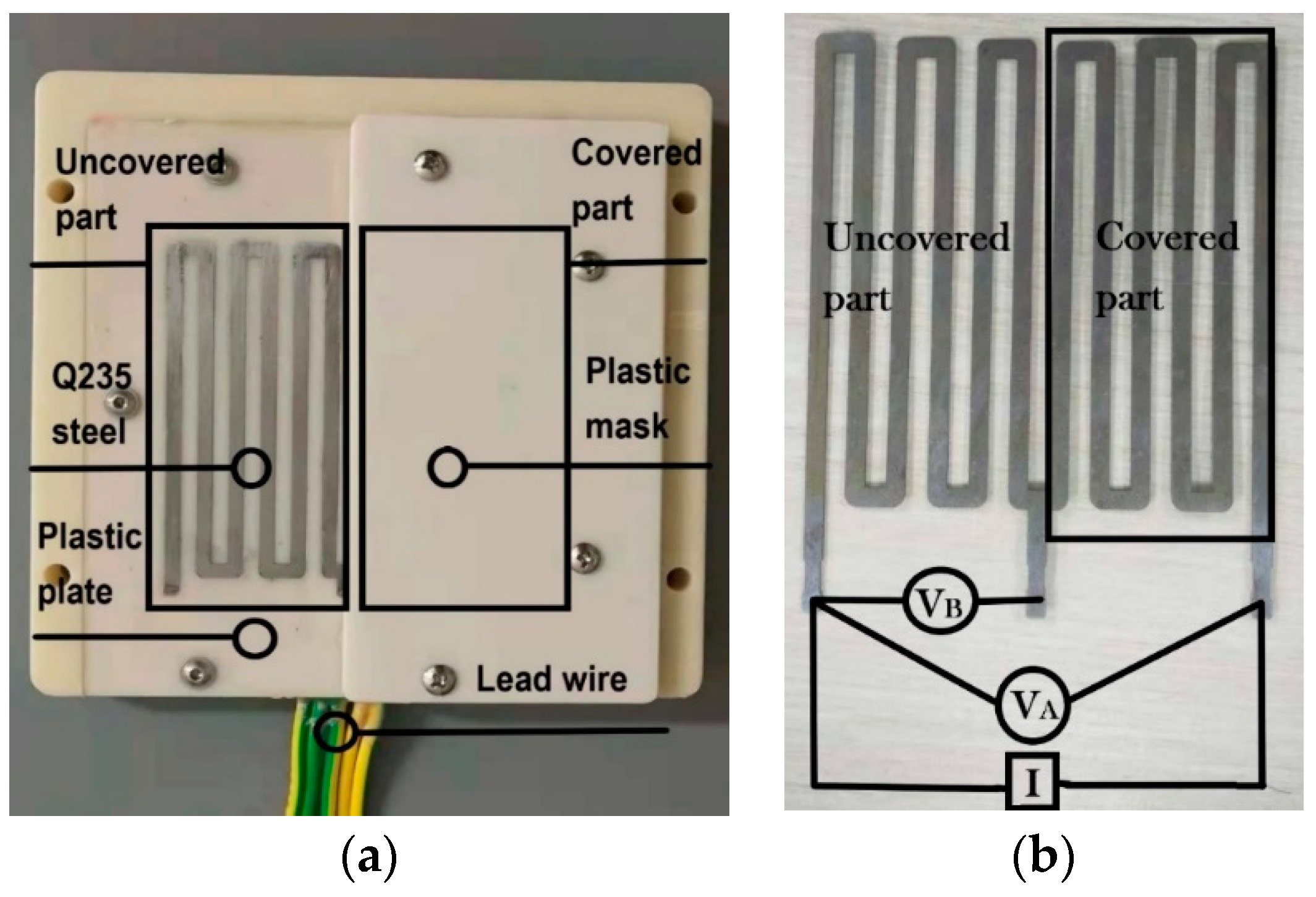
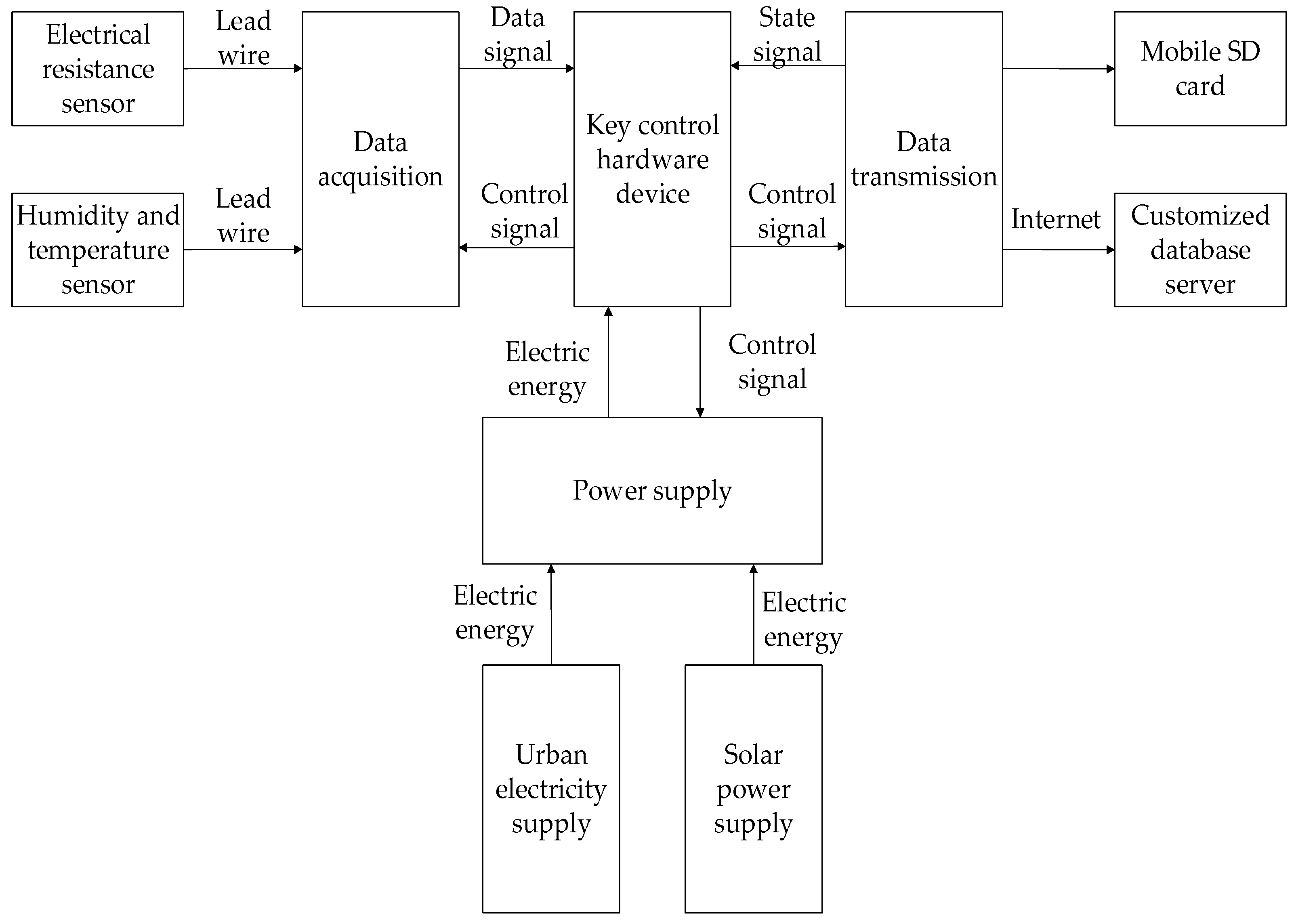
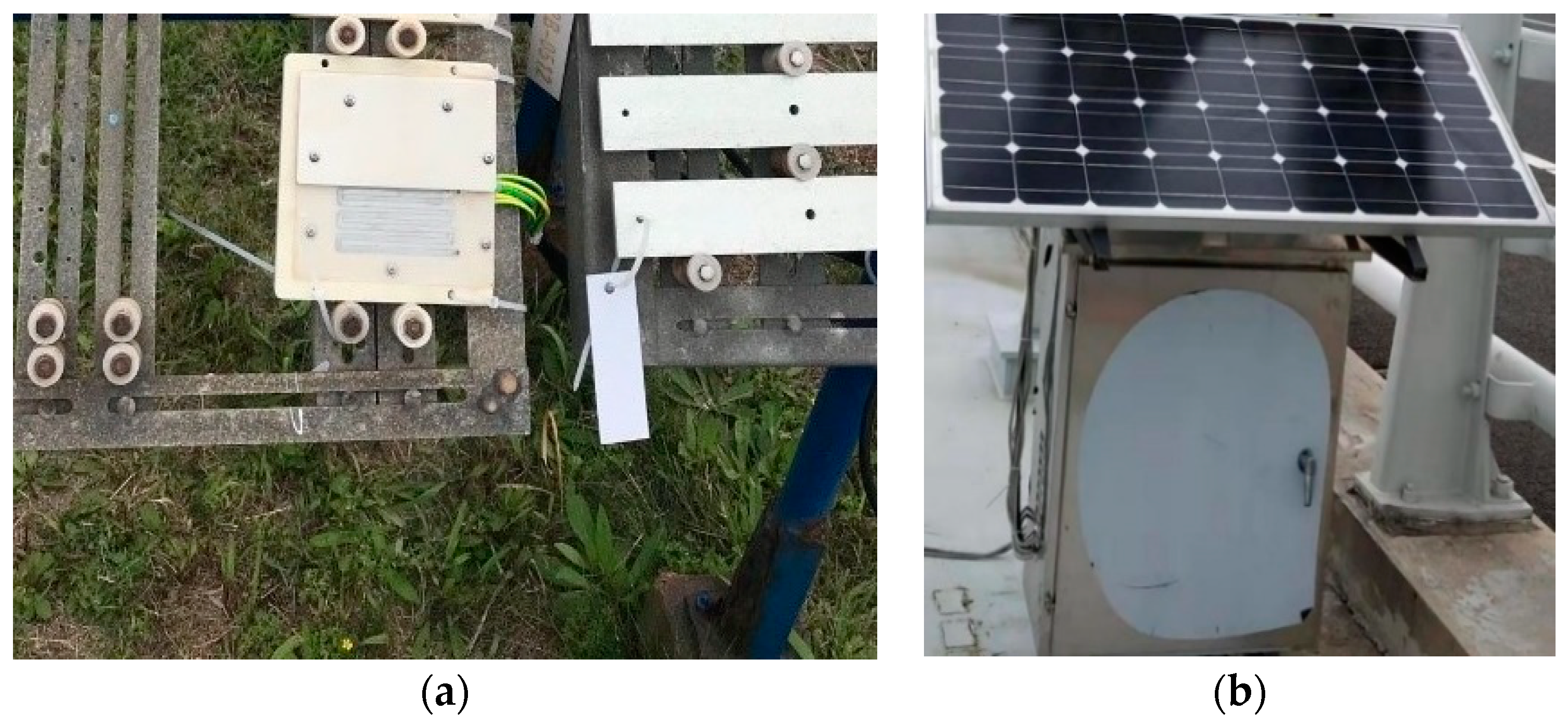
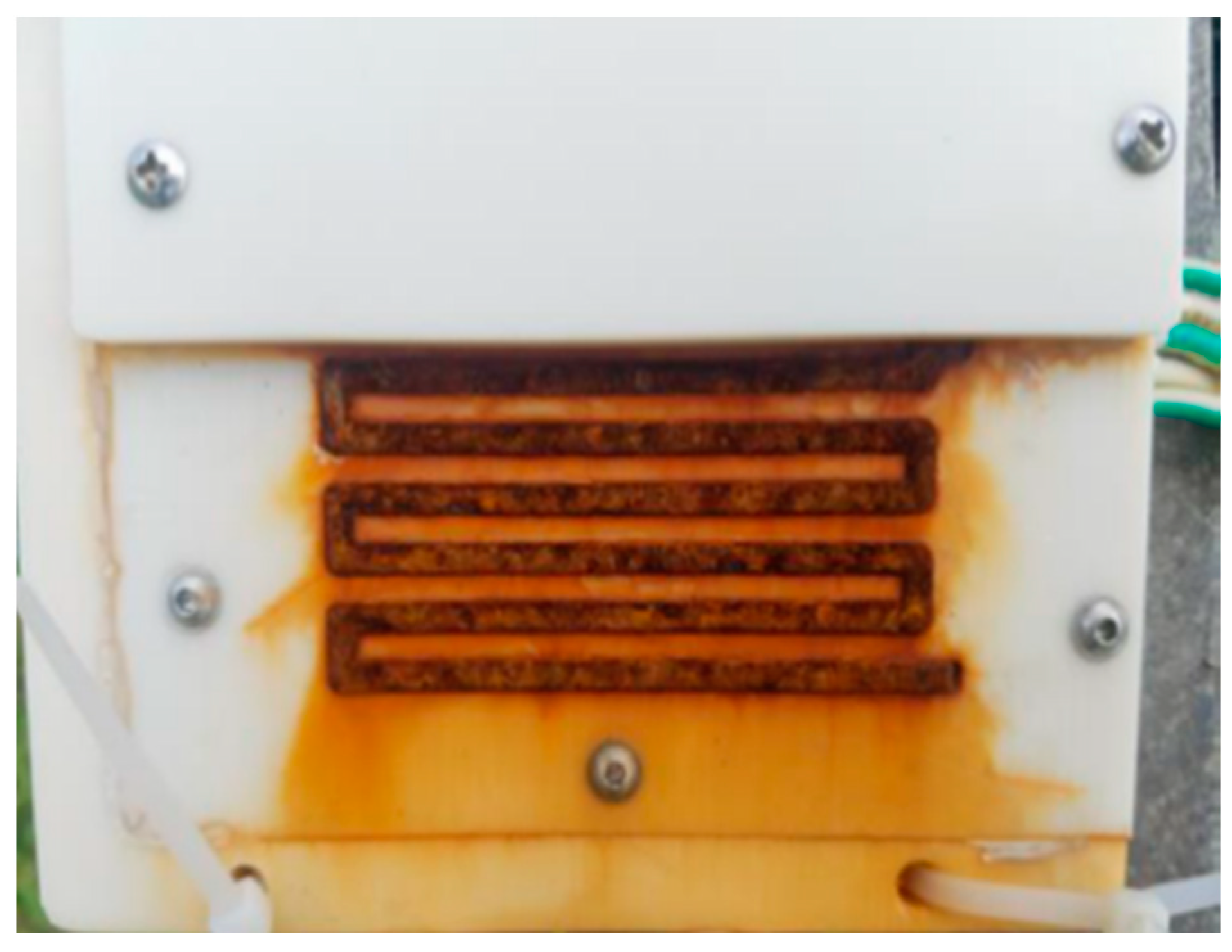

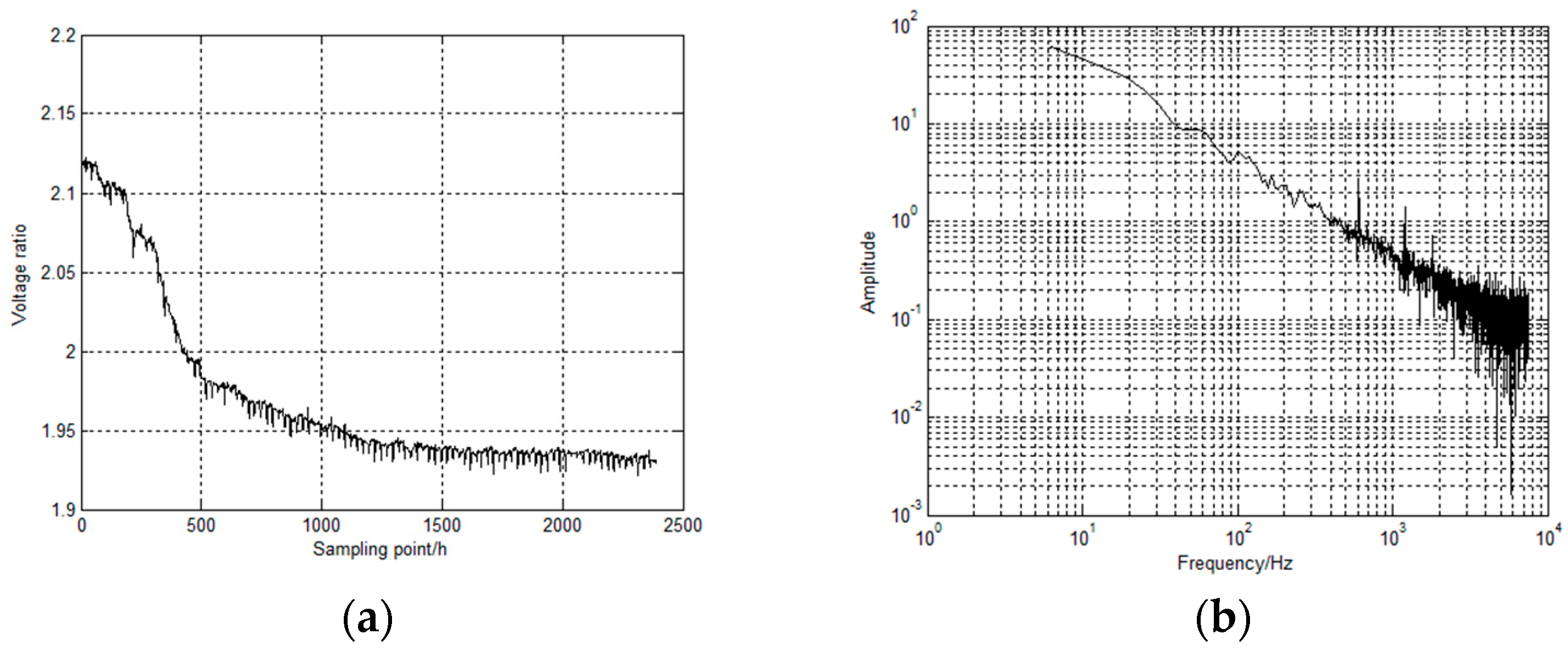
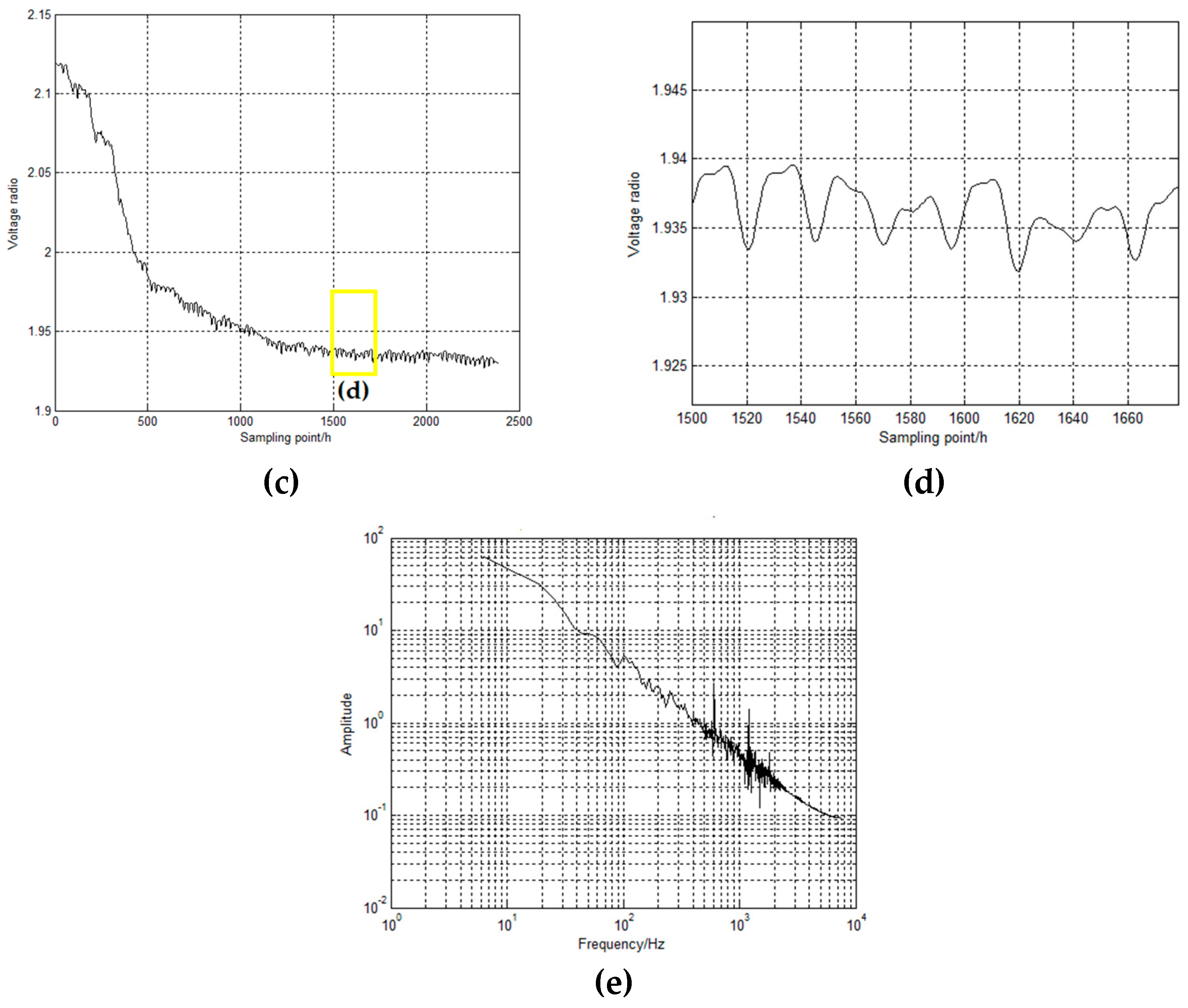
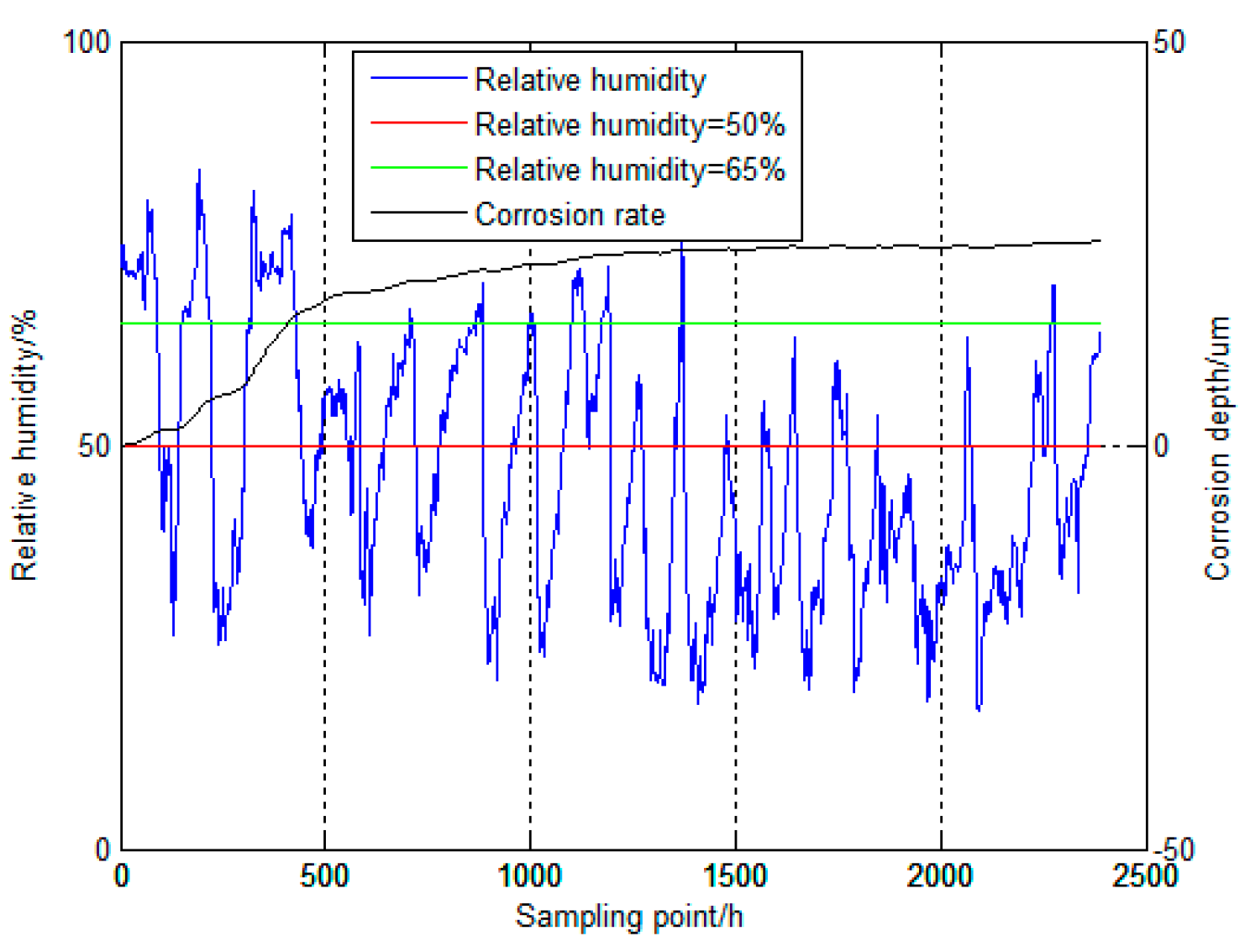

| Tday | RHday | PM2.5day | PM10day | SO2,day | NO2,day | |
|---|---|---|---|---|---|---|
| −0.262 | −0.044 | 0.092 | 0.041 | 0.027 | 0.028 | |
| 0.846 | 0.336 | −0.147 | −0.122 | −0.274 | −0.133 |
| Tweek | RHweek | PM2.5week | PM10week | SO2,week | NO2,week | |
|---|---|---|---|---|---|---|
| −0.314 | −0.252 | 0.116 | 0.110 | 0.030 | 0.115 | |
| 0.165 | 0.372 | 0.016 | 0.021 | −0.017 | 0.089 |
| Tmonth | RHmonth | PM2.5month | PM10month | SO2,month | NO2,month | |
|---|---|---|---|---|---|---|
| 0.172 | −0.201 | 0.025 | 0.020 | −0.083 | −0.040 | |
| – | – | – | – | – | – |
| T | RH | PM2.5 | PM10 | SO2 | NO2 | |
|---|---|---|---|---|---|---|
| Part 1 | 0.979 | 0.724 | 0.506 | 0.509 | 0.488 | 0.464 |
| Part 2 | 0.999 | 0.983 | 0.696 | 0.761 | 0.717 | 0.605 |
| Part 3 | 0.947 | 0.524 | 0.404 | 0.379 | 0.347 | 0.379 |
© 2019 by the authors. Licensee MDPI, Basel, Switzerland. This article is an open access article distributed under the terms and conditions of the Creative Commons Attribution (CC BY) license (http://creativecommons.org/licenses/by/4.0/).
Share and Cite
Li, Z.; Fu, D.; Li, Y.; Wang, G.; Meng, J.; Zhang, D.; Yang, Z.; Ding, G.; Zhao, J. Application of An Electrical Resistance Sensor-Based Automated Corrosion Monitor in the Study of Atmospheric Corrosion. Materials 2019, 12, 1065. https://doi.org/10.3390/ma12071065
Li Z, Fu D, Li Y, Wang G, Meng J, Zhang D, Yang Z, Ding G, Zhao J. Application of An Electrical Resistance Sensor-Based Automated Corrosion Monitor in the Study of Atmospheric Corrosion. Materials. 2019; 12(7):1065. https://doi.org/10.3390/ma12071065
Chicago/Turabian StyleLi, Zhuolin, Dongmei Fu, Ying Li, Gaoyuan Wang, Jintao Meng, Dawei Zhang, Zhaohui Yang, Guoqing Ding, and Jinbin Zhao. 2019. "Application of An Electrical Resistance Sensor-Based Automated Corrosion Monitor in the Study of Atmospheric Corrosion" Materials 12, no. 7: 1065. https://doi.org/10.3390/ma12071065
APA StyleLi, Z., Fu, D., Li, Y., Wang, G., Meng, J., Zhang, D., Yang, Z., Ding, G., & Zhao, J. (2019). Application of An Electrical Resistance Sensor-Based Automated Corrosion Monitor in the Study of Atmospheric Corrosion. Materials, 12(7), 1065. https://doi.org/10.3390/ma12071065




